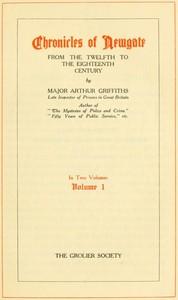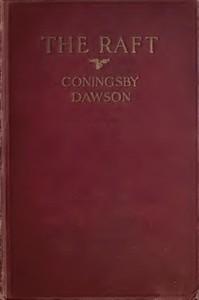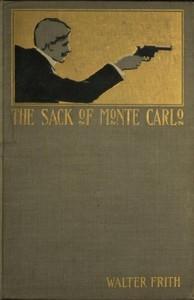Read this ebook for free! No credit card needed, absolutely nothing to pay.
Words: 75629 in 9 pages
This is an ebook sharing website. You can read the uploaded ebooks for free here. No credit cards needed, nothing to pay. If you want to own a digital copy of the ebook, or want to read offline with your favorite ebook-reader, then you can choose to buy and download the ebook.


: Chronicles of Newgate Vol. 2 From the eighteenth century to its demolition by Griffiths Arthur - Criminals Great Britain; Punishment Great Britain; Newgate (Prison : London England); Prisons England
THIEVING LANE " 78
THE GREAT COURT OF THE TOWER, LONDON " 297
CHRONICLES OF NEWGATE
THE GAOL FEVER
The gaol fever the visible exponent of foul state of gaols--Neither sufficient light, air or space--Meagre rations--Its ravages--Extends from prisons to court-houses--To villages--Into the army and the fleet--The Black Assize--The sickness of the House at the King's Bench prison--The gaol fever in the 17th century--Its outbreaks in the 18th--The Taunton Assize--Originated in Newgate in 1750--Extends to Old Bailey with deadly results--The Corporation alarmed--Seek to provide a remedy--Enquiry into the sanitary condition of Newgate--Statistics of deaths--No regular doctor at Newgate--Mr. Akerman's brave and judicious conduct at a fire in prison--The sexes intermixed--Debauchery--Gaming--Drunkenness--Moral contamination--Criminals willingly took military service to escape confinement in Newgate.
The gaol fever or distemper, which originated in Newgate in 1750, was the natural product of unsanitary conditions. This fell epidemic exercised strange terrors by the mystery which once surrounded it; but this has now been dispelled by the search-light of modern medical science. All authorities are agreed that it was nothing but that typhus fever, which inevitably goes hand in hand with the herding and packing together of human beings, whether in prisons, workhouses, hospitals, or densely-populated quarters of a town. The disease is likely to crop up "wherever men and women live together in places small in proportion to their numbers, with neglect of cleanliness and ventilation, surrounded by offensive effluvia, without proper exercise, and scantily supplied with food." It is easy to understand that the poison would be generated in gaol establishments such as Newgate; still more, that prisoners would be saturated with it so as to infect even healthy persons whom they approached. This is precisely what happened, and it is through the ravages committed by the disorder beyond the prison walls that we learn the most. The decimation it caused within the gaol might have passed unnoticed, but the many authentic cases of the terrible mortality it occasioned elsewhere forced it upon the attention of the chronicler. It made the administration of the law a service of real danger, while its fatal effects can be traced far beyond the limits of the court-house. Prisoners carried home the contagion to the bosoms of their families, whence the disease spread into town or village. They took it on board ship, and imported it into our fleets. "The first English fleet sent to America lost by it above 2,000 men; . . . the seeds of infection were carried from the guardships into the squadrons; and the mortality thence occasioned was greater than by all other diseases or means of death put together." It was the same with the army: regiments and garrisons were infected by comrades who brought the fever from the gaol; sometimes the escorts returning with deserters temporarily lodged in prison also sickened and died.
The earliest mention of a gaol distemper is that quoted by Howard from Stowe, under date 1414, when "the gaolers of Newgate and Ludgate died, and prisoners in Newgate to the number of sixty-four." In "Wood's History of Oxford" there is a record of a contagious fever which broke out at the assize of Cambridge in 1521. The justices, gentlemen, bailiffs, and others "resorting thither took such an infection that many of them died, and almost all that were present fell desperately sick, and narrowly escaped with their lives." After this comes the Black Assize at Oxford in 1577, when, Holinshed says, "there arose amidst the people such a dampe that almost all were smouldered, very few escaping . . . the jurors presently dying, and shortly after Sir Robert Bell, Lord Chief Baron." To this account we may add that of "Baker's Chronicle," which states that all present died within forty hours, the Lord Chief Baron, the sheriff, and three hundred more. The contagion spread into the city of Oxford, and thence into the neighbourhood, where there were many more deaths. Stowe has another reference to the fever about this date, and tells us that in the King's Bench Prison, in the six years preceding the year 1579, a hundred died of a certain contagion called "the sickness of the house." Another outbreak occurred at Exeter, 1586, on the occasion of holding the city assizes, when "a sudden and strange sickness," which had appeared first among the prisoners in the gaol, was dispersed at their trial through the audience in court, "whereof more died than escaped," and of those that succumbed, some were constables, some reeves, some tithing men or jurors. No wonder that Lord Bacon, in writing on the subject, should characterize "the smell of the jail the most pernicious infection, next to the plague. When prisoners have been long and close and nastily kept, whereof we have had in our time experience twice or thrice, both judges that sat upon the trial, and numbers of those that attended the business or were present, sickened upon it and died."
The gaol distemper is but sparingly mentioned throughout the seventeenth century, but as the conditions were precisely the same, it is pretty certain that the disease existed then, as before and after. But in the first half of the eighteenth century we have detailed accounts of three serious and fatal outbreaks. The first was at the Lent Assizes held in Taunton in 1730, "when," Howard says, "some prisoners who were brought thither from the Ilchester gaol infected the court; and Lord Chief Baron Pengelly, Sir James Shepherd, sergeant, John Pigott, Esq., sheriff, and some hundreds besides, died of the gaol distemper." The second case occurred also in the west country, at Launceston, where "a fever which took its rise in the prisons was disseminated far and near by the county assizes, occasioned the death of numbers, and foiled frequently the best advice." It is described as a contagious, putrid, and very pestilential fever, attended with tremblings, twitchings, restlessness, delirium, with, in some instances, early frenzy and lethargy; while the victims broke out often into livid pustules and purple spots. The third case of gaol fever was in London in 1750, and it undoubtedly had its origin in Newgate. At the May Sessions at the Old Bailey there was a more than usually heavy calendar, and the court was excessively crowded. The prisoners awaiting trial numbered a hundred, and these were mostly lodged in two rooms fourteen feet by seven, and only seven feet in height; but some, and no doubt all in turn, were put into the bail dock; many had long lain close confined in the pestiferous wards of Newgate. The court itself was of limited dimensions, being barely thirty feet square, and in direct communication with the bail dock and rooms beyond, whence an open window, at the farther end of the room, carried a draught poisoned with infection towards the judges' bench. Of these four, viz., Sir Samuel Pennant, the Lord Mayor, Sir Thomas Abney and Baron Clark, the judges, and Sir Daniel Lambert, alderman, were seized with the distemper, and speedily died; others, to the number of forty, were also attacked and succumbed. Among them were some of the under-sheriffs, several members of the bar and of the jury; while in others of lesser note the disease showed itself more tardily, but they also eventually succumbed. Indeed, with the exception of two or three, none of those attacked escaped. The symptoms were the same as these already described, including the delirium and the spots on the skin.
The Corporation of London, moved thereto by a letter from the Lord Chief Justice, and not unnaturally alarmed themselves at the ravages of a pestilence which spared neither Lord Mayor nor aldermen, set about inquiring into its origin. A committee was appointed for this purpose in October, 1750, five months after the last outbreak, and their instructions were to ascertain "the best means for procuring in Newgate such a purity of air as might prevent the rise of those infectious distempers." . . . The committee consulted the Rev. Dr. Hales and Dr. Pringle, F. R. S., and the latter subsequently published a paper in the "Transactions of the Philosophical Society," containing much curious information concerning the disease. The remedy suggested by Dr. Hales, and eventually approved of by the committee, was to further try the ventilator which some time previously had been placed upon the top of Newgate. Nothing less than the reconstruction on an extended plan of the prison, which was acknowledged to be too small for its average population, would have really sufficed, but this, although mooted, had not yet taken practical shape. The existing ventilator was in the nature of a main trunk or shaft, into which other air-pipes led from various parts of the prison. But these were neither numerous nor effective, while there was no process of extraction or of obtaining an updraught. To effect this a machine was erected upon the leads of Newgate with large arms like those of a windmill. Nevertheless, throughout the execution of the work and afterwards the air of Newgate continued pestiferous and fatal to all who breathed it.
The gaol fever or its germs must indeed have been constantly present in Newgate. The more crowded the prison the more sickly it was. The worst seasons were the middle of winter or the middle of summer, or when the weather was damp and wet. The place was seldom without some illness or other; but in one year, according to Mr. Akerman, about sixteen died in one month from the gaol distemper. Mr. Akerman declared that the fever was all over the gaol, and that in ten years he had buried eight or ten of his servants. He also gave a return to the Commons' committee, which showed that eighty-three prisoners had died between 1758 and 1765, besides several wives who had come to visit their husbands, and a number of children born in the gaol. This statement was supported by the evidence of the coroner for Middlesex, Mr. Beach, who went even further, and made out that one hundred and thirty-two had died between 1755 and 1765, or forty-nine more in the two additional years. In 1763 the deaths had been twenty-eight, all of them of contagion, according to Mr. Beach, who was also of opinion that a large percentage of all the deaths which had occurred were due to the gaol fever.
Twenty years later, when Howard was visiting prisons, he heard it constantly affirmed by county gaolers that the gaol distemper was brought into their prisons by those removed under Habeas Corpus from Newgate. In May, 1763, I find an inquisition was held in the new gaol, Southwark, upon the body of Henry Vincent, one of five prisoners removed there from Newgate. It then appeared that the Southwark prisoners had been healthy till those from Newgate arrived, all five being infected. About this date too, according to the coroner for Middlesex, there were several deaths in the new gaol, of prisoners brought from Newgate who had caught the fever in that prison. This same coroner had taken eleven "inquisitions" at Newgate in a couple of days, all of whom he thought had died of the gaol distemper. He was also made ill himself by going to Newgate. Again in 1772 there was a new alarm of epidemic. In the sessions of the preceding year there had been an outbreak of malignant distemper, of which several had died. An attempt was made to remodel the ventilator, and other precautions were taken. Among the latter was a plan to convey the fumes of vinegar through pipes into the Sessions' House while the courts were sitting. At this date there was no regular medical officer in attendance on the Newgate prisoners, although an apothecary was paid something for visiting occasionally. Howard expresses his opinion strongly on the want. "To this capital prison," he says, "the magistrates would, in my humble opinion, do well to appoint a physician, a surgeon, and an apothecary." The new prison and the last, built by Dance, was just then in process of erection, and was intended to embody all requirements in prison construction. But Howard was dissatisfied with it. Although it would avoid many inconveniences of the old gaol, yet it had some manifest errors. "It is too late," he goes on, "to point out particulars. All I say is, that without more than ordinary care, the prisoners in it will be in great danger of gaol fever."
William Smith, M. D., who, from a charitable desire to afford medical assistance to the sick, inspected and reported in 1776 upon the sanitary conditions of all the London prisons, had not a better opinion of the new Newgate than had Howard. The gaol had now a regular medical attendant, but "it was filled with nasty ragged inhabitants, swarming with vermin, though Mr. Akerman the keeper is extremely humane in keeping the place as wholesome as possible. The new prison is built upon the old principle of a great number being crowded together into one ward, with a yard for them to assemble in in the day, and a tap where they may get drink when they please and have the money to pay." Dr. Smith states that he had no fault to find with the wards, which were large, airy, high, and as clean as could well be expected where such a motley crew are lodged. But he condemns the prison, on which so much had been already spent, and which still required an immense sum to finish it. Its site was, he thought, altogether faulty. "The situation of a gaol should be high and dry in an open field, and at a distance from the town, the building spacious, to obviate the bad effects of a putrid accumulation of infectious air, and extended in breadth rather than height. The wards should have many divisions to keep the prisoners from associating." Dr. Smith found that the numbers who sickened and died of breathing the impure and corrupted air were much greater than was imagined. Hence, he says, the absolute necessity for a sufficiency of fresh air, "the earth was made for us all, why should so small a portion of it be denied to those unhappy creatures, while so many large parts lay waste and uncultivated?"
Free books android app tbrJar TBR JAR Read Free books online gutenberg
More posts by @FreeBooks

: The Raft by Dawson Coningsby Lowell Orson Illustrator - Man-woman relationships Fiction; Marriage Fiction








